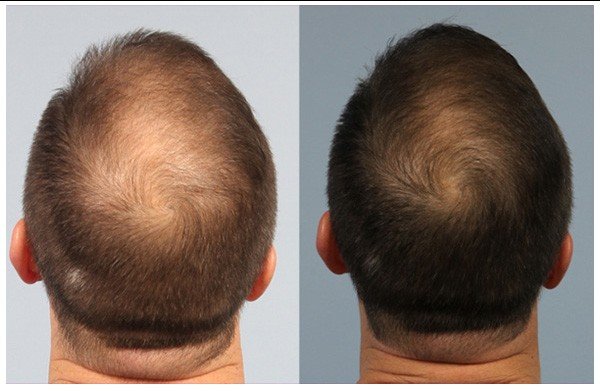 Get SEO-Optimized Articles – Written for Humans, Loved by Google!
Get SEO-Optimized Articles – Written for Humans, Loved by Google!
Is Hair Transplant Cost: A Comprehensive Breakdown
Written by dynamic clinic » Updated on: June 17th, 2025

Hair transplants have gained significant popularity in recent years as a solution for individuals facing hair loss. However, understanding the costs associated with this procedure is crucial for those considering it. This comprehensive breakdown will explore the various factors influencing Hair Transplant Cost in Dubai, different techniques available, potential additional expenses, and tips for budgeting effectively.
1. Understanding Hair Transplant Techniques
Hair transplant procedures can be categorized into two primary techniques: Follicular Unit Extraction (FUE) and Follicular Unit Transplantation (FUT). Each method has its own cost implications.
a. Follicular Unit Extraction (FUE)
Description: FUE involves harvesting individual hair follicles from the donor area, typically at the back of the scalp, using a specialized tool. The follicles are then implanted into the thinning or balding areas.
Cost Implications: FUE is generally more expensive than FUT due to its meticulous nature. The average cost ranges from $4,000 to $15,000, depending on the number of grafts needed.
b. Follicular Unit Transplantation (FUT)
Description: In the FUT method, a strip of skin containing hair follicles is removed from the donor area, and the follicles are then dissected into smaller grafts for transplantation.
Cost Implications: FUT can be more cost-effective for larger procedures, with costs typically ranging from $3,000 to $10,000. However, it may leave a linear scar on the donor site.
2. Factors Influencing Hair Transplant Costs
Several factors contribute to the overall cost of hair transplants:
a. Number of Grafts Required
The number of grafts needed significantly affects the price. Clinics typically charge per graft, with prices ranging from $2 to $10 per graft.
Patients usually require between 1,000 and 3,000 grafts, depending on the extent of hair loss.
b. Surgeon's Experience and Reputation
Highly experienced and reputable surgeons may charge higher fees due to their expertise and successful track records. Investing in a skilled surgeon can lead to better outcomes and fewer complications.
c. Geographical Location
Costs can vary based on location. Urban clinics in high-demand areas often charge more due to higher operational costs, while rural clinics may offer more competitive pricing.
International options, such as clinics in Turkey or Southeast Asia, can provide high-quality care at lower prices, making them attractive alternatives.
d. Clinic Facilities and Technology
Clinics that utilize advanced technologies, such as robotic assistance for FUE procedures, may charge higher fees. While these technologies can enhance precision and outcomes, it’s essential to weigh the benefits against the costs.
3. Additional Costs to Consider
When budgeting for a hair transplant, it’s important to account for potential additional expenses:
a. Consultation Fees
Some clinics may charge a consultation fee for initial evaluations. Ensure you clarify whether this fee is included in the overall procedure cost.
b. Anesthesia and Facility Fees
Anesthesia costs can vary and may not always be included in the initial quote. Additionally, some clinics may charge facility fees for the use of their surgical rooms.
c. Post-Operative Medications and Care
Patients often require medications for pain management and recovery. It's crucial to consider these costs in your budget.
d. Follow-Up Visits
Clarify whether follow-up appointments are included in the procedure cost or if they incur additional charges. Regular follow-ups are vital for monitoring progress and addressing any concerns.
e. Potential Complications or Revisions
In some cases, patients may require revision procedures or additional grafts, especially if the initial transplant does not yield the desired results. Ensure you discuss potential costs for any follow-up procedures during your consultation.
4. Average Cost Ranges
While individual circumstances vary, here are some general cost ranges for hair transplants:
5. Financing Options and Insurance Coverage
Understanding financing options and insurance coverage can help make hair transplants more accessible:
a. Insurance Coverage
Hair transplant procedures are often considered cosmetic and may not be covered by insurance. However, it’s worth checking with your insurance provider to understand your policy's specific terms and conditions.
b. Financing Plans
Many clinics offer financing options to help patients manage costs:
Monthly Payment Plans: Some clinics allow patients to spread the cost over several months, making it more affordable.
Low-Interest Loans: Certain clinics partner with financing companies to provide low-interest loans specifically for hair restoration procedures.
6. Conclusion
Understanding the costs associated with hair transplants is essential for anyone considering this procedure. By breaking down the various factors that influence pricing, prospective patients can make informed decisions that align with their budget and expectations.
While the investment in a hair transplant may seem significant, it’s important to consider the long-term benefits and the potential for improved self-esteem and quality of life. Prioritize quality and expertise when choosing a clinic, and take the time to gather all the information needed to make a confident decision in your hair restoration journey.
Note: IndiBlogHub features both user-submitted and editorial content. We do not verify third-party contributions. Read our Disclaimer and Privacy Policyfor details.
Copyright © 2019-2025 IndiBlogHub.com. All rights reserved. Hosted on DigitalOcean for fast, reliable performance.













